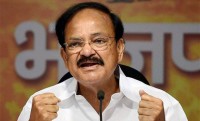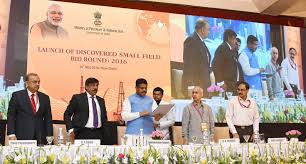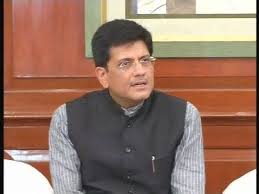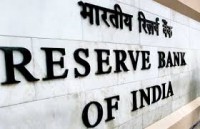The Directorate General of Hydrocarbons organized an interactive session at Calgary, Alberta on 18th July 2016 for ‘Discovered Small Fields Bid Round 2016’ to facilitate interactions between the Government of India and Industry Leaders, and to promote investment in the energy sector of India.
Many distinguished officials from the Ministry of Petroleum and Natural Gas (MoPNG), Government of India (GoI), top business leaders, and various international and national media houses were present at the session.
The interactive session was organized at The Westin, Calgary to showcase and invite prospective bidders for the Discovered Small Fields Bid Round 2016, which was launched on 25th May 2016 in New Delhi, India and was followed up by the subsequent shows at Mumbai and Guwahati in India and recently in Houston, Texas.
The Government of India has introduced the Discovered Small Fields Bid Round – 2016, under which it is offering 46 Contract Areas consisting of 67 different small fields across 9 sedimentary basins, estimated to hold over 625 Million Barrels of Oil and Oil Equivalent Gas in-place, spread over 1,500 square kilometres in Onland, Shallow water and Deepwater areas, for extraction and exploration of oil and gas. Bids are being invited by the Directorate General of Hydrocarbons (DGH) to develop and monetize these contract areas.
Currently, India is the fastest growing large economy in the world, clocking a GDP of 7.6% in FY 2015-16. Along with the growing economy, the demand for energy has also risen dramatically over the past few years, which is majorly met by imports, and is expected to increase even further in the future. As stated by Mr. K D Tripathi, Secretary, Ministry of Petroleum and Natural Gas, the government aims to reduce energy import dependency by 10%. This can be done by tapping on the hydrocarbon resource available and increasing the oil and gas production.
Joint Secretary, MoPNG, Mr. Amar Nath, informed that that this is a great opportunity to invest in the E & P sector in India especially considering the new policy regime under which the bid round is being held. Mr. Matthew Machielse, Asst. Deputy Minister, Ministry of Economic Development, Government of Alberta shared message on behalf of Premier, Govt. of Alberta and highlighted that there are significant opportunities for increasing trade between India and Alberta.
Mr. Rajib Chander, Counsel General of India in Vancouver highlighted that energy has always been a focus for co-operation between India and Canada and that while, the trade between the two countries has grown over time, there are significant opportunities for furthering the trade relations.
The session involved screening a film on Oil and Gas Industry of India, which highlighted the evolution of oil and gas sector and presented key statistics of the sector.
Mr. Nilaya Varma, Partner with KPMG in India gave a detailed presentation on Indian economy with a focus on oil and gas sector in India. This was followed up by sharing of experiences by Mr. Stephen Beatty (Partner with KPMG Canada), Mr. Mayank Ashar (Leading oil and gas expert) and Mr. Sastry Karra (Director, Simorgh Energy) on Doing Business in India.
Ms. Rachel Calvert from IHS gave a Presentation on Risk Rating of India. She highlighted that India was a very lucrative market in the Oil and Gas space and would continue to have a strong potential with further development.
A presentation was given by Mr. Atanu Chakraborty, Director General, DGH to highlight the features of the Discovered Small Field Round along with the details of the contract areas on offer and the bidding timelines.
To discuss the Taxation Regime in India, Ms. Neetu Vinayek (Partner, KPMG India) highlighted the specific provisions of the laws relating to income tax, customs duty, cess, royalty and license/lease fees as applicable to activities connected with the extraction or production of petroleum in the upstream sector.
Mr. Sengupta from ONGC India informed the participants on the infrastructure and facilities available near the offered fields too.
Mr. K.D. Tripathi, as part of his plenary address, informed the most important feature of the bid round that all the fields on offer are already discovered, which mitigates the risks associated in exploration. He highlighted that DGH has set up a facilitation cell to address investor queries. He also informed that he would be available at all times to provide assistance to the investors, especially in cases of difficulties faced by them.
In the afternoon, a round table conference was conducted with select delegates to discuss and answer key queries on the Discovered Small Field Bid Round 2016. A physical data center, providing access to 2D and 3D seismic data, well logs etc., was launched in the evening by the Secretary, MoPNG.
The GoI delegation informed the participants that they look forward to foster harmonious collaborations with the industry to help in taking the E&P reform process forward by facilitating the bidders at every step towards monetization of these discovered small fields.












